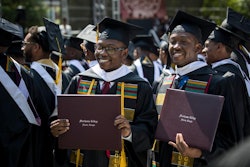Many of the issues that we covered in last year’s journalism edition leading up to the National Association of Black Journalists’ annual convention — the frenzy over the need for journalists to have multimedia skills, the steps media companies were taking to remain profitable and competitive, and whether newsrooms’ commitment to diversity would be abandoned in the process — have intensified one year later. In fact, the American Society of Newspaper Editors’ most recent annual survey found that the number of full-time journalists working at daily newspapers shrank by 4.4 percent in the past year, the largest decrease in 30 years, reports writer Michelle D. Anderson in “Minority Journalists Push Media to Maintain Diversity Commitment.”
However, we found in our reporting that there is one media market that is experiencing growth — Spanish-language media. Staff writer Michelle J. Nealy reports that while most English-language media outlets are experiencing declining circulation and ad revenue, many Spanish-language newspapers and TV stations are attracting readers and viewers, and are, therefore, experiencing a boost in subscribers and ad revenue. Read more in “Spanish- Language Media Market In a Growth Phase.”
Contributing editor Lydia Lum takes a serious look at comic strips and reports on the ongoing challenges for minority illustrators to get their comics in U.S. dailies around the country. There still seems to be a reigning sentiment that a comic strip with minority characters cannot gain a mainstream following. Read more in “What’s Not Funny About the Funny Pages.”
A graduate of the New York Times Student Journalism Institute, Michelle J. Nealy headed down to New Orleans earlier this summer to profile the two-week program held at Dillard University. The 5-yearold institute has created a venue to identify some of the best minority student journalists in the country. Some of its alumni have been recruited by top newspapers, including The New York Times and the Boston Globe. The participants gain confidence as budding journalists by getting on-the-job training covering local news. In “Capturing a Different Picture,” Michelle reports on this pipeline program, which also aims to identify minority journalism talent at historically Black colleges and universities.
Speaking of which, the need for minority talent in both print and broadcast has become essential over the past few months as the public followed first the presidential primaries and now the general election. During the primaries there were countless occasions when the debate turned to race, and on many news programs there was not a journalist of color to weigh in and offer a different perspective. To be fair, many media outlets have made and are making an effort to have more diverse representation on their political pundit panels. Since it looks like the country will have an African-American as the Democratic nominee for president, the pressure will be on the media to use minority journalists to help wade through the political discourse. Read more about this in Ronald Roach’s “Coming Into View.
© Copyright 2005 by DiverseEducation.com


















